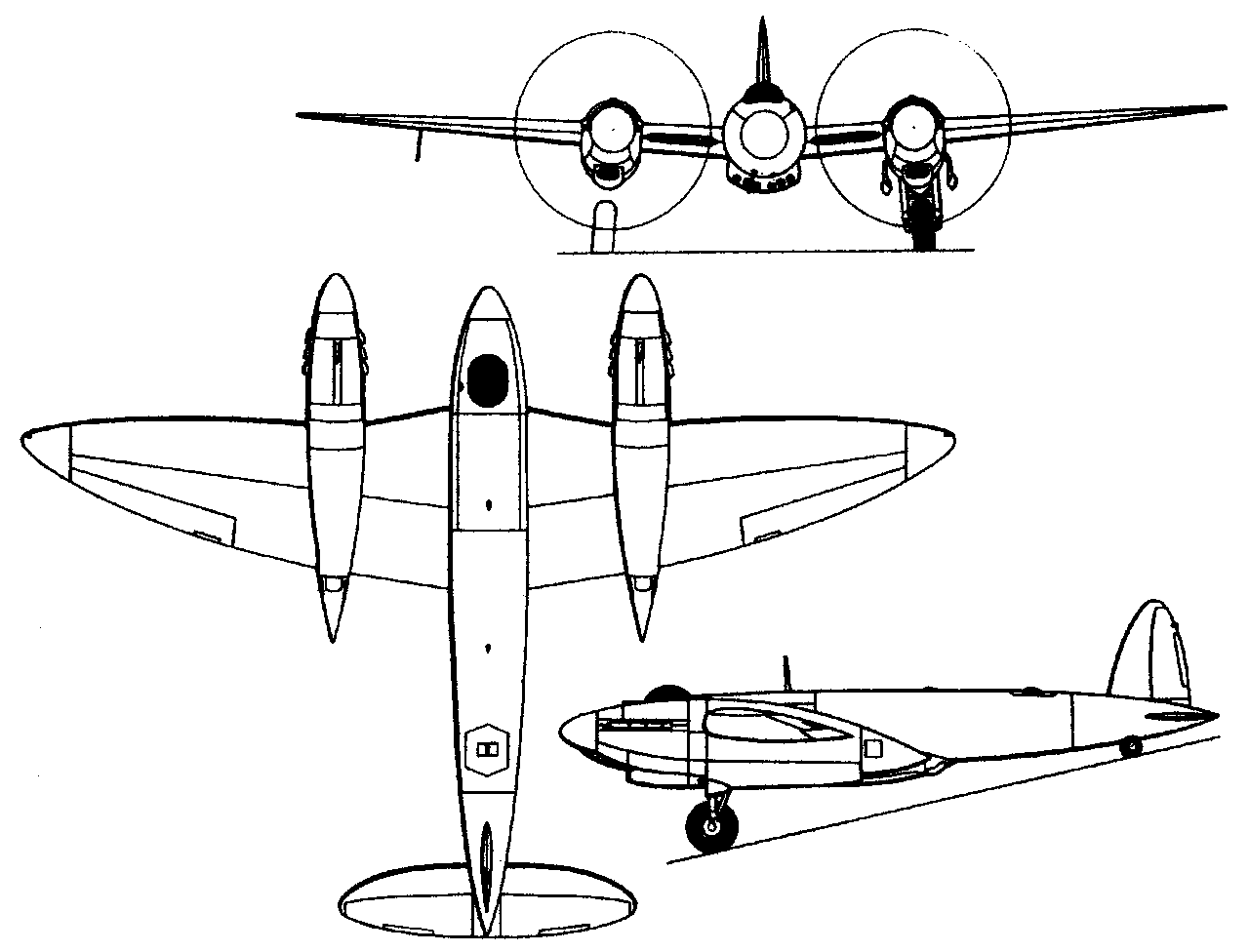- Yes
- No
Vickers Type 432

Design History:
The Vickers Type 432 was a prototype British high-altitude fighter aircraft developed during the Second World War. The aircraft was intended to allow RAF elements to engage a presumed German high-altitude bomber threat, after encounters with the Junkers Ju 86P in 1940 showed that the Luftwaffe was capable of high altitude bombing to which the RAF had no effective response at the time. This wasn’t the impetus of the Type 432’s development though, as its origins lay in 1939, with a specification for a twin-engined heavy fighter armed with either 20 or 40mm cannons. To this end Vickers set out a proposal for a griffon engined aircraft, armed with the larger 40mm cannon, in a rather unusual flexible mount for attacking bombers from below. Impressed by this, and with it in line with previous bomber hunter doctrine from the interwar period, the Air Ministery requested further developments. The tailored Specification F.22/39 to cover this project, and Vickers gave the aircraft the internal name Type 414.
It was around this time that Vickers realised their design would be equally viable for a fixed gun fighter, requested by Specification F.6/39, to which end they adapted the design to carry a 6 x 20mm gun armament suspended in an underbelly gondola similar to other derivative night fighters of the time manufactured from existing aircraft such as the Blenheim and Beaufighter, though this was due to design constraints and not direct emulation.
Interestingly, as a form of convergent evolution, the christened Type 432 resembled a larger version of the de Havilland Mosquito, earning the prototype the nickname “Tin Mosquito”. The aircraft itself was unrelated to the De Havilland design, and the appearance was souly superficial. The type 432 was fitted with a pressurised cockpit in the nose, with a bubble dome for the pilot to look out of, similar to the astrodome used in the high altitude Wellington bomber prototypes in testing around the same time. This design similarity resulted in the front of the Type 432 being occupied by a large pressure capsule that occupied the entire nose of the aircraft, which rendered the normal nose-mounted guns impossible, so the cannons had to be fitted in the previously mentioned gondula fairing to the below rear of the aircraft. The elliptical wings of the aircraft were also non-conventional, with the top and bottom manufactured separately, and were then mated on the aircraft in a manner similar to a peapod, allowing the wings to hold significantly larger fuel tanks then if the plane was made with the normal strut and rib arrangement. Issues with the griffon development also nessessitated the powerplant to be substituted with Rolls Royce Merlin 61 engines, with the intention of substituting them at a later date once the issues with the powerplant were rectified.
With the aircraft design finalised, the first prototype flew on the 24th December 1942. The trials found serious handling problems on the ground, with the plane snaking during taxiing, along with the plane being unable to land on its designed three-point stance necessitating the replacement of the Irving-type ailerons with new Westland types along with an alteration of tail settings. It was also found that the maximum projected speed of 435 mph (700 km/h) at 28,000 ft (8,535 m) could not be achieved as the weaker merlin 61 engines did not offer the required high altitude performance above 23,000 feet. Because of this the competing Westland Welkin design was ordered into production, and all development of the Type 432 was cancelled, including the work on the second Type 446 prototype, on the 1st of May 1943. The first prototype was retained by Vickers for testing until the end of 1944, before being ultimately scrapped after only performing 28 flights.
Plane Specification:

General characteristics
Crew: 1
Length: 39 ft 3 in (11.96 m)
Wingspan: 56 ft 10+1⁄2 in (17.336 m)
Height: 13 ft 9 in (4.19 m)
Wing area: 450 sq ft (42 m2)
Empty weight: 16,373 lb (7,427 kg)
Max takeoff weight: 20,168 lb (9,148 kg)
Powerplant: 2 × Rolls-Royce Merlin 61 liquid-cooled V12 engines, 1,520 hp (1,130 kW) each
Performance
Maximum speed: 380 mph (610 km/h, 330 kn) at 15,000 ft (4,600 m)
Range: 1,500 mi (2,400 km, 1,300 nmi)
Service ceiling: 38,000 ft (12,000 m)
Rate of climb: 2,750 ft/min (14.0 m/s)
Armament
Guns: 6 × 20 mm Hispano cannon in a ventral gondola
Additional Images:







Sources:
- Vickers Type 432 - Wikipedia (Wiki page for type)
- Vickers Type 432 High-Altitude Fighter | Old Machine Press (More history)
- Vickers Type 432 High-Altitude Heavy Fighter Prototype (More history)
- Vickers 432 - fighter (More history)
- https://www.youtube.com/watch?v=XI7oFGwaih0&ab_channel=IHYLS (Video giving the full history)
